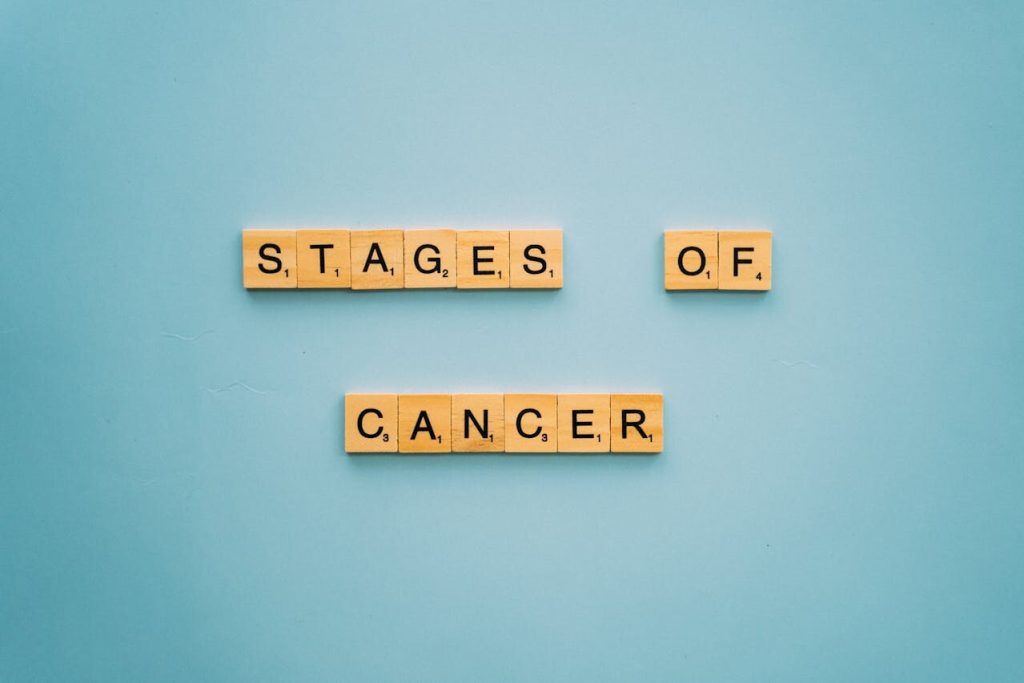Glioblastoma is a fast-growing type of brain cancer that affects many individuals annually. Understanding the different stages of glioblastoma is crucial to determine the course of treatment. This article delves into the various stages of glioblastoma, their characteristics, and treatment options available.
Key Takeaways
- Glioblastoma is an aggressive form of brain cancer that requires prompt diagnosis and treatment.
- There are four stages of glioblastoma, categorized based on the extent and severity of the cancer.
- Early detection and diagnosis of glioblastoma are essential in improving treatment outcomes.
- Treatment options for glioblastoma include surgery, radiation therapy, chemotherapy, immunotherapy, and integrative therapies.
- The Cancer Center for Healing located in Irvine, CA, offers comprehensive, personalized care for glioblastoma patients.
What Are Glioblastoma Stages?
Glioblastoma stages refer to the progression of the aggressive brain cancer known as glioblastoma. There are four stages, with stage 1 being the earliest and stage 4 being the most advanced and terminal stage.
The classification system used for glioblastoma staging is the World Health Organization (WHO) grading system. This system takes into account the size and location of the tumor, as well as the degree of malignancy and cellular activity.
Knowing the stage of glioblastoma is critical in understanding the progression of the disease and determining treatment options. It is important to note that each patient’s case is unique, and treatments may vary depending on individual circumstances.
Stage 1 Glioblastoma: Early Detection and Diagnosis
Glioblastoma is a highly aggressive brain cancer with a poor prognosis. Early detection and diagnosis of the disease, particularly in stage 1, is crucial in providing the patient with the best possible outcome. Stage 1 glioblastoma indicates the tumor is confined to a small area of the brain and has not yet spread to other regions.
The diagnosis of stage 1 glioblastoma is often accidental, as it may be discovered while investigating the patient’s symptoms unrelated to the disease. Common symptoms at this stage include headaches, seizures, and cognitive changes. The diagnostic process for stage 1 glioblastoma includes a neurological exam, brain imaging, and a biopsy to confirm the presence of cancer cells.
Once diagnosed, prompt treatment initiation is essential to prevent the tumor from advancing to a higher stage. Treatment options for stage 1 glioblastoma may include surgery to remove the tumor, radiation therapy, and chemotherapy.
The Cancer Center for Healing located in Irvine, CA, offers a comprehensive approach to treating glioblastoma, emphasizing personalized care and a holistic approach. Their experienced team, led by Dr. Leigh Erin Connealy, provides advanced and innovative treatments, including integrative therapies and supportive care to improve the overall well-being of their patients.
Stage 2 Glioblastoma: Spreading and Tumor Growth
Stage 2 glioblastoma is characterized by the spreading of cancer cells to nearby brain tissue and the growth of the tumor. This stage is considered more advanced than stage 1 glioblastoma and can present with a range of symptoms that affect the patient’s quality of life.
As the tumor grows, it can put pressure on surrounding brain tissue, leading to headaches, nausea, vomiting, and seizures. Patients may also experience changes in vision, weakness on one side of the body, and difficulty speaking or understanding language.
Due to the location and characteristics of stage 2 glioblastoma, treatment can present some challenges. Surgery may be considered to remove as much of the tumor as possible, but it may not be feasible to remove the entire mass without causing further damage to the brain.
| Treatment Options | Outcome |
|---|---|
| Radiation therapy | May reduce the size of the tumor and alleviate symptoms |
| Chemotherapy | May be used in conjunction with radiation therapy to target cancer cells |
| Targeted therapy and immunotherapy | May be explored as innovative treatment options, although research is ongoing |
Despite these challenges, treatment options exist that can help manage symptoms and potentially prolong the patient’s life. However, the prognosis for stage 2 glioblastoma is still considered poor, and the disease will likely progress to more advanced stages over time.
Stage 3 Glioblastoma: Advancement and Increased Severity
As glioblastoma progresses to stage 3, the tumor cells invade adjacent areas of the brain, causing an increase in severity and impact on the patient’s health. At this stage, the tumor has usually spread beyond its original location, making complete surgical removal impossible. Additionally, radiation and chemotherapy become less effective as the cancer cells become more resistant.
Patients with stage 3 glioblastoma may experience a range of symptoms, including persistent headaches, seizures, speech difficulties, memory loss, and weakness or numbness in the limbs. The severity and frequency of these symptoms can vary depending on the location and size of the tumor, as well as the individual’s overall health.
Given the challenges posed by stage 3 glioblastoma, a comprehensive treatment plan that combines different modalities is necessary. At the Cancer Center for Healing, Dr. Leigh Erin Connealy and her team utilize a holistic approach that integrates conventional treatments with complementary therapies to optimize patient outcomes.
Some of the treatments offered at Cancer Center for Healing for glioblastoma stage 3 include:
| Treatment Type | Description |
|---|---|
| Surgery | Surgical removal of as much of the tumor as possible to alleviate symptoms and slow the progression of the disease |
| Radiation Therapy | Targeted radiation to the tumor site to destroy cancer cells and shrink the tumor size |
| Chemotherapy | Administration of drugs to kill cancer cells and reduce tumor growth |
| Immunotherapy | Introduction of substances to stimulate the body’s immune system to fight cancer cells |
| Targeted Therapy | Drugs that target specific genetic mutations that allow cancer cells to survive and proliferate |
| Integrative Therapies | Complementary treatments such as acupuncture, massage, and nutritional counseling to support overall health and well-being |
The Cancer Center for Healing offers patients with stage 3 glioblastoma access to a range of innovative treatments in a supportive, patient-centered environment. The goal is to enhance quality of life and provide personalized care throughout the treatment journey.
Stage 4 Glioblastoma: Terminal Stage and Palliative Care
Glioblastoma stage 4 is the final stage of this aggressive brain cancer, and it is considered terminal. At this stage, the tumor has spread and grown significantly, impacting the patient’s health and quality of life.
Despite the serious prognosis, there are still treatments available to help manage symptoms and improve quality of life. Palliative care is a crucial aspect of stage 4 glioblastoma treatment, which focuses on alleviating pain and discomfort while providing emotional and spiritual support to the patient and their loved ones.
At Cancer Center for Healing, patients with stage 4 glioblastoma have access to comprehensive palliative care services that address their unique needs and preferences. The center’s team of experts works closely with patients and their families to develop a personalized care plan that optimizes comfort and quality of life.
Supportive therapies such as acupuncture, massage therapy, and nutritional counseling can also help manage symptoms and promote overall well-being. The center’s integrative approach to care enables patients to explore a range of complementary treatments and services that can contribute to a more comfortable and fulfilling life.
While stage 4 glioblastoma is a challenging diagnosis, it is important for patients and their families to know that they are not alone. The Cancer Center for Healing’s compassionate team of healthcare professionals is dedicated to supporting patients every step of the way, providing them with the care and resources they need to cope with this difficult disease.
Treatment Options for Glioblastoma at Cancer Center for Healing
Glioblastoma is a complex disease that requires a comprehensive treatment approach. At Cancer Center for Healing, patients have access to a range of treatments and services that are tailored to their individual needs. Under the guidance of Dr. Leigh Erin Connealy, a board-certified medical oncologist, the center offers a holistic approach to cancer care, focused on enhancing the patient’s physical and mental well-being.
The center’s treatment options for glioblastoma include:
| Treatment | Description |
|---|---|
| Surgery | A key component in treating glioblastoma, surgery aims to remove as much of the tumor as possible while minimizing damage to healthy brain tissue. |
| Radiation therapy | This treatment uses high-energy radiation to destroy cancer cells and reduce tumor size. It can be delivered externally or internally, depending on the patient’s needs. |
| Chemotherapy | Chemotherapy involves using drugs to target cancer cells and stop them from dividing. It can be administered orally or intravenously. |
| Immunotherapy | This innovative treatment approach aims to boost the body’s immune response to fight cancer cells. It can be administered alone or in combination with other treatments. |
| Targeted therapy | Targeted therapy uses drugs or other substances to target specific cancer cells without damaging healthy cells. It can be administered orally or intravenously. |
| Integrative therapies | Complementary therapies such as acupuncture, massage, and nutritional support are offered to enhance the patient’s physical and emotional well-being. |
| Supportive care | Palliative care, pain management, and end-of-life support are provided to enhance the patient’s quality of life. |
At Cancer Center for Healing, glioblastoma patients receive personalized care and ongoing support throughout their treatment journey. The center’s integrative approach to cancer care enhances the effectiveness and quality of life for patients, and has been shown to yield better outcomes than traditional cancer care approaches alone.
Surgery: A Key Component in Glioblastoma Treatment
Surgery is an essential component of glioblastoma treatment, aiming to remove as much of the tumor as possible and relieve symptoms. In most cases, surgery is the first line of treatment for glioblastoma patients and is typically followed by radiation therapy and/or chemotherapy.
There are different surgical techniques used in glioblastoma treatment depending on the size and location of the tumor. The most common approach is craniotomy, which involves removing part of the skull to access the brain and remove the tumor. The surgeon may also use imaging techniques such as MRI to guide the surgery and ensure the safe removal of the tumor.
The extent of the tumor removal during surgery is a significant factor in determining the patient’s prognosis and quality of life. In general, the more of the tumor that can be safely removed, the better the outcome. However, complete removal is not always possible, especially in cases where the tumor is located in a critical area of the brain.
Despite the benefits of surgery, there are risks associated with this type of treatment, including bleeding, infection, and neurological deficits. The surgeon will discuss these risks with the patient and take measures to minimize them.
In conclusion, surgery plays a crucial role in glioblastoma treatment, aiming to remove as much of the tumor as possible and relieve symptoms. The type of surgery used depends on the tumor’s size and location, and the extent of removal is a crucial factor in determining the patient’s prognosis. While there are risks associated with surgery, the benefits often outweigh the risks, and the surgeon will take measures to minimize them.
Immunotherapy and Targeted Therapy: Innovative Approaches
Immunotherapy and targeted therapy are cutting-edge treatment options that have shown promising results in the treatment of glioblastoma. Immunotherapy aims to harness the body’s immune system to recognize and destroy cancer cells. Targeted therapy involves using drugs specifically designed to target cancer cells, blocking their growth and division.
At the Cancer Center for Healing, glioblastoma patients have access to a range of immunotherapy and targeted therapy options. These innovative approaches are customized to each patient’s unique needs and medical history to maximize their effectiveness.
One example of targeted therapy used at the center is tumor treating fields (TTF), which uses electric fields to disrupt the division of cancer cells. Another option is bevacizumab, which targets a protein that helps tumors grow blood vessels.
Immunotherapy options at the center include checkpoint inhibitors, which block proteins that allow cancer cells to evade the immune system, and dendritic cell vaccines, which use the patient’s own immune cells to fight cancer.
While these treatments have shown promise in clinical trials, they also carry potential risks and side effects that should be carefully considered. The team at the Cancer Center for Healing works closely with patients to ensure they fully understand the benefits and drawbacks of each treatment option.
By offering personalized and comprehensive care, the center aims to provide glioblastoma patients with the best possible outcomes and quality of life.
Immunotherapy and Targeted Therapy: Innovative Approaches
Immunotherapy and targeted therapy are two innovative treatment approaches that have shown promising results in the treatment of glioblastoma. These therapies aim to enhance the body’s immune response to cancer cells and target specific cancer cells, respectively.
Immunotherapy involves using drugs that help the immune system recognize and kill cancer cells. One example of this type of therapy is checkpoint inhibitors, which block proteins that prevent the immune system from attacking cancer cells. Another type of immunotherapy is adoptive cell transfer, which involves removing immune cells from the patient’s body and modifying them in a laboratory to attack cancer cells before being infused back into the patient’s body.
Targeted therapy, on the other hand, involves using drugs that specifically target certain proteins or genes that are involved in the growth and spread of cancer cells. This approach is often used in conjunction with other treatments, such as chemotherapy and radiation therapy.
At the Cancer Center for Healing, Dr. Leigh Erin Connealy and her team of experts offer a range of cutting-edge therapies, including immunotherapy and targeted therapy, carefully tailored to each patient’s unique needs. By combining these therapies with traditional treatments such as surgery, radiation therapy, and chemotherapy, the Cancer Center for Healing provides a comprehensive and personalized approach to glioblastoma treatment.
Integrative Therapies and Supportive Care: Enhancing Well-being
Complementary and integrative therapies, when used alongside traditional cancer treatments, can enhance the well-being of glioblastoma patients and alleviate symptoms. The Cancer Center for Healing offers a range of integrative therapies, including acupuncture, massage therapy, and nutritional counseling, to support patients on their healing journey.
In addition to integrative therapies, supportive care services are also provided at the center. These services include counseling, spiritual care, and pain management, all of which aim to improve the patient’s quality of life and overall well-being.
At the Cancer Center for Healing, the focus is on personalized care, and patients receive a comprehensive treatment plan that incorporates both traditional and complementary therapies. The integrative approach taken by the center’s team of experts empowers patients to actively participate in their healing process and achieve optimal health and well-being.
Prognosis and Life Expectancy: Understanding the Outlook
The prognosis and life expectancy for glioblastoma patients can vary depending on the stage of the disease and the individual’s health status. Unfortunately, glioblastoma has a poor prognosis, with most patients surviving less than 2 years after diagnosis.
However, it’s essential to note that every patient’s journey with glioblastoma is unique, and there are factors that can influence prognosis, such as age, tumor location and size, genetics, and the effectiveness of treatment.
For stage 1 glioblastoma patients, the prognosis is relatively good compared to later stages, with a median survival rate of up to 5 years. Stage 2 patients have a lower median survival rate, with an average of 2-3 years. In stage 3, the median survival rate drops further, with patients surviving an average of 1-2 years. Unfortunately, stage 4 glioblastoma, which is considered terminal, has a median survival rate of only 3-9 months.
It’s important to remember that these are average statistics, and each patient’s journey is unique. Treatment approaches that target the individual’s specific needs and circumstances can improve survival rates and enhance the quality of life.
At the Cancer Center for Healing, the team works closely with glioblastoma patients to create personalized treatment plans that consider the particular factors that influence prognosis. The focus is on providing comprehensive, holistic care that addresses all aspects of the patient’s well-being, from physical to emotional and spiritual health.
Conclusion
Understanding the stages of glioblastoma is crucial in devising an effective treatment plan for patients. From early diagnosis to end-of-life care, each stage requires specialized attention and support. At the Cancer Center for Healing, patients can benefit from a comprehensive, holistic approach to cancer care that prioritizes both physical and emotional well-being.
With a range of treatment options available, including surgery, radiation therapy, chemotherapy, immunotherapy, targeted therapy, and integrative therapies, patients can receive personalized care that targets their specific needs. The Cancer Center for Healing is led by Dr. Leigh Erin Connealy, a board-certified integrative medicine physician with extensive experience in cancer care.
While glioblastoma carries a poor prognosis, seeking timely and comprehensive care can improve outcomes and enhance quality of life. The Cancer Center for Healing offers hope and support for patients and their loved ones. Contact us today to learn more about our approach to glioblastoma treatment.
FAQ
Q: What are glioblastoma stages?
A: Glioblastoma stages refer to the classification system used to categorize the progression of glioblastoma, a type of aggressive brain cancer.
Q: What is stage 1 glioblastoma?
A: Stage 1 glioblastoma is the initial stage of the disease, characterized by early detection and diagnosis. It is crucial to identify the disease at this stage for prompt treatment initiation.
Q: What is stage 2 glioblastoma?
A: Stage 2 glioblastoma involves the spreading of cancer cells and the growth of the tumor. This stage presents its own set of challenges and symptoms.
Q: What is stage 3 glioblastoma?
A: Stage 3 glioblastoma represents the advancement of the disease and increased severity in the patient’s health. It comes with its unique symptoms and challenges.
Q: What is stage 4 glioblastoma?
A: Stage 4 glioblastoma is the terminal stage of the disease. Palliative care and end-of-life support become crucial to enhance the patient’s quality of life.
Q: What treatment options are available at the Cancer Center for Healing?
A: The Cancer Center for Healing offers comprehensive treatment options for glioblastoma patients, under the expertise of Dr. Leigh Erin Connealy, with a holistic approach to cancer care.
Q: How does surgery contribute to glioblastoma treatment?
A: Surgery plays a key role in glioblastoma treatment by removing the tumor and alleviating symptoms. Different surgical techniques may be employed, each with its own outcomes.
Q: What is the role of radiation therapy and chemotherapy in glioblastoma treatment?
A: Radiation therapy and chemotherapy are targeted treatments that aim to reduce tumor size and target cancer cells. The treatment process and potential side effects may vary.
Q: What are immunotherapy and targeted therapy in the context of glioblastoma treatment?
A: Immunotherapy and targeted therapy are innovative approaches in glioblastoma treatment. Immunotherapy enhances the body’s immune response, while targeted therapy focuses on specific cancer cells.
Q: How do integrative therapies and supportive care enhance the well-being of glioblastoma patients?
A: Integrative therapies and supportive care are essential in improving the well-being of glioblastoma patients. The Cancer Center for Healing offers a range of complementary treatments and services.
Q: What is the prognosis and life expectancy for glioblastoma patients?
A: The prognosis and life expectancy for glioblastoma patients vary depending on the different stages of the disease. Personalized care and ongoing support are crucial for managing the outlook.






